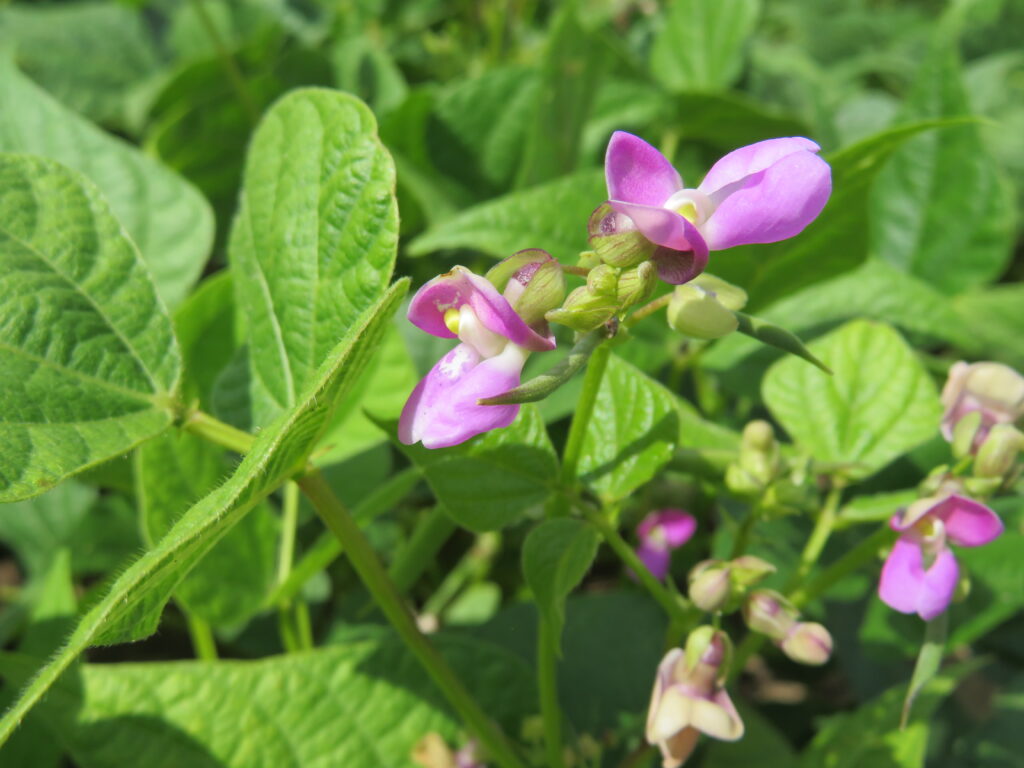White mold is an important disease of dry beans in Ontario and in-crop management of white mold occurs during flowering. White mold spores can land on stems, leaves or pods but deteriorating flower petals are very susceptible to infection. Spores colonize flower tissue, and the disease enters other healthy plant tissues when infected flower petals land on leaves or stems. Infection can then rapidly spread across neighbouring plants in the field. Risk factors for white mold include field history of white mold, short crop rotations with susceptible crops, a dense canopy and warm (20-25°C), moist weather conditions.

Fungicide applications that coat flowers can help prevent the disease from infecting healthy plant tissue. Timing fungicide applications when there are 1 to 3 pin beans present on plants promotes good coverage of the majority of flower petals prior to petal drop. If white mold risk is very high because of wet conditions, a two-pass program with applications at early bloom and again 7-10 days later may be warranted. In dry bean trials (2009-2014) conducted by Chris Gillard, University of Guelph – Ridgetown campus the top performing white mold fungicides in terms of disease severity, yield and return on investment have been Senator, Allegro, Propulse and Lance.

Temperatures above 28°C generally keep white mold at bay, and dry conditions do not favour mold development. However, risk of white mold in dry beans continues through the summer with continued flowering. Varieties or dry bean classes with longer flowering windows may have late season onset of mold, so producers should continue to monitor conditions and consider risks beyond first pin bean.
Manitoba Pulse & Soybean Growers have a fungicide decision worksheet for managing white mold in dry bean that assists in evaluation of risk based on rainfall, temperature, humidity and other dry bean management factors. It can be found in the production resources section at Manitobapulse.ca/production. There is also an app called Sporecaster, developed by the University of Wisconsin-Madison, designed to assist soybean producers in making management decisions for white mold in soybeans. It uses local weather data based on the location of your mobile device. It can be found at the app store on your mobile phone.
